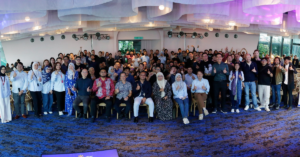How Web 3.0 Will Revolutionize the Public Relations Industry

Opinions expressed by Entrepreneur contributors are their own.
The rise of Web 3.0 is set to transform all industries. Public relations (PR) is no exception. With the emergence of decentralized technologies like blockchain, Web 3.0 brings new possibilities for PR professionals to connect with their audiences in ways previously thought impossible.
Blockchain technology, for instance, can enable PR practitioners to create secure and transparent channels of communication that protect user privacy by giving individuals greater control over their personal data. This can build deeper trust between brands and their audiences, leading to more meaningful relationships.
Meanwhile, Web 3.0 technologies such as non-fungible tokens (NFTs) offer a unique way to engage audiences by creating digital assets that have value and scarcity, which can be used to incentivize participation and reward engagement. NFTs can be used to create unique digital experiences and reward audiences for their engagement and loyalty.
Some companies have started testing the waters of incorporating Web 3.0 technologies into their communications campaigns. Established businesses started developing digital assets on the metaverse or creating corporate NFTs.
What are the top strategies for PR professionals to harness Web 3.0 technologies in their communications campaigns?
Related: 3 Tips to Take Advantage of the Future Web 3.0 Decentralized Infrastructure
1. Leverage NFTs to create a unique audience experience
One of the primary attractions of NFTs is their capacity to tell brand stories in innovative ways. Public relations professionals can incorporate stories into NFTs and deliver them through collectible assets. NFT-compatible PR campaigns give consumers access to brand content, exclusive events, digital assets and special offers. Brands can now collaborate with their customers more closely than ever, rewarding them for their loyalty and attention.
Nike, for example, has acquired virtual goods company RTFKT which specializes in digital sneakers. By leveraging RTFKT’s virtual sneaker drops on its Web 3.0 marketplace, Nike creates new digital collectibles Air Force Ones that are positioned as more than just NFTs; but virtual creations. This approach fosters a sense of belonging and personalized interaction, strengthening the bond between Nike and its dedicated fanbase.
2. Build a niche community on the metaverse
Brands can leverage the metaverse to build a niche community by tapping into its unique privacy features. As consumers become increasingly privacy-conscious, the metaverse’s decentralized nature and anonymity options offer a safe and secure space for users to engage with others who share similar interests. By creating a branded presence within the metaverse that prioritizes user privacy, brands can cultivate a loyal following among niche communities.
Teaming up with People of Crypto Lab (POC), major metaverse platform, The Sandbox, has co-launched launched the Valley of Belonging, a safe and vibrant space that celebrates diversity and inclusivity. The immersive experience allows platform members to participate in an LGBTQIA+ Pride Parade and explore various activities and meet diverse personalities. This initiative showcases the potential of the metaverse in fostering social change and creating a welcoming environment for marginalized communities.
3. Integrate metaverse into your online and offline presence
M2O2O (metaverse to online to offline) is a strategic approach that aims to create a seamless user experience across different platforms. It involves using the metaverse as a starting point and transitioning to online and offline platforms. This approach can be used to create immersive experiences that allow users to engage with brands and products in a more personalized way. By connecting the metaverse to online and offline experiences, brands can create a cohesive and memorable user experience that fosters loyalty and engagement.
Last year, Coca-Cola’s “Share a Coke” summer campaign in Mainland China, Taiwan, Macau and Hong Kong showcased a remarkable fusion of audience connectivity in both the Web 3.0 domain and the physical realm. The campaign transformed Coke bottles into connection points for friends. It also featured a “Metaverse Music Festival” where users customized avatars and engaged in music battles and a WeChat-embedded game with social sharing elements. The campaign bridged the virtual and physical realms, creating memorable moments for Coca-Cola fans.
The emergence of Web 3.0 technologies marks a new era of engagement for PR professionals. With the inclusion of NFTs, metaverse and other cutting-edge Web 3.0 technologies, brands now have the tools to create unprecedented experiences and forge deeper connections with their audiences.
As the new age of Web 3.0 continues to evolve, we can expect to see even more innovative applications that will revolutionize the way brands engage with their customers.
The future of PR is here, and it’s time for us to embrace it and unlock the full potential of Web 3.0. With limitless possibilities and new frontiers to explore, the only question remains: Is the sky still a limit?
Related: Boost Your Business’s Online Presence By Leveraging These Web3 Marketing Trends and Tactics
Source link
#Web #Revolutionize #Public #Relations #Industry





